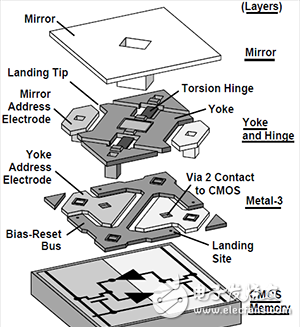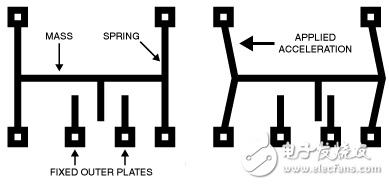MEMS devices are currently mainly used in automotive and consumer electronics, and will gradually become popular in the medical, industrial, and aerospace markets. So what is MEMS? What are the characteristics? What are the difficulties in MEMS design and manufacturing? This article will answer one by one.
What is MEMS?Microelectromechanical systems (MEMS), also known as microsystems in Europe, or micromechanics in Japan, are a class of devices characterized by small dimensions and special manufacturing methods. MEMS devices feature lengths from 1 mm to 1 micron - 1 micron but are much smaller than the diameter of a person's hair.
MEMS tend to use microscopic analog components that are common to mechanical parts and tools, such as they may include channels, holes, cantilevers, membranes, cavities, and other structures. However, MEMS device processing techniques are not mechanical. Instead, they employ microfabrication techniques similar to integrated circuit batch processing.
Many products today utilize MEMS technology such as micro heat exchangers, inkjet printheads, micromirror arrays for HD projectors, pressure sensors, and infrared detectors.
Why do you need MEMS?“They told me a motor with a small fingernail size. They told me that there is a device on the market where you can write a prayer on a big needle. But this is nothing; it is the most primitive, but I am going to discuss A small step in the direction of the pause. Underneath it is an amazing little world. In 2000, when they reviewed the current stage, they wondered why it was not until 1960 that someone began to work hard in this direction."
-- Richard Feynman, "There is still plenty of space at the bottom," was presented at the annual meeting of the American Physical Society on December 29, 1959 at Caltech.
In this classic prophetic speech, "There is still plenty of space at the bottom," Richard Feynman continues to describe how we write each volume of the Encyclopedia Britannica on the needle tip. But we may ask: Why do you want to generate these objects on such a small ruler?

(Editor's Note: Richard Feynman (May 11, 1918 - February 15, 1988), Feynman was a descendant of Russian and Polish Jews immigrating to the United States at the end of the 19th century. American physicist. 1965 The winner of the Nobel Prize in Physics, proposed the calculation method of Feynman diagram, Feynman rule and renormalization, is an indispensable tool for studying quantum electrodynamics and particle physics. Feynman is considered to be the most wise theory after Einstein. Physicist, also the first person to propose nano concepts)
MEMS devices can accomplish the same tasks for many macro devices, with many unique advantages. One of the first and most obvious advantages is miniaturization. As mentioned earlier, MEMS-scale devices are small enough to be fabricated using mass production processes similar to current integrated circuits. Like the integrated circuit industry, mass production can significantly reduce the cost of mass production. In general, MEMS also require very small amounts of material for production, which further reduces costs.
In addition to being cheaper, MEMS devices are also more widely used than their larger equivalents. In smartphones, cameras, airbag control units or similar small devices, metal balls and spring accelerometers are not designed to the best of their ability; but by reducing the order of magnitude, MEMS devices can be used in applications where traditional sensors are not tolerated. in.

Figure 1: TI's digital micromirror pixels, disassembled view. Texas Instruments All Rights Reserved.
Easy integration is another advantage of MEMS technology. Because they employ manufacturing processes similar to ASIC fabrication, MEMS structures can be more easily integrated with microelectronics. Integrating MEMS and CMOS structures in a truly integrated device is challenging, but not impossible, and is being implemented incrementally. At the same time, many manufacturers have adopted hybrid approaches to create successful commercial and cost-effective MEMS products.
Texas Instruments' Digital Micromirror Device (DMD) is one such case. DMD is at the heart of TI's DLP® technology and is used in projector units for commercial or educational applications as well as in digital cinema. Each 16 square micron micromirror is electrostatically actuated using the potential between it and its underlying CMOS memory cell. The grayscale image is produced between the on and off states of the pulse width modulated mirror. Colors are added by using a three-chip solution (one chip per primary color) or by a single chip and a color ring or RGB LED source. The latter technology is designed to display each color in a continuous and fast manner by synchronizing the rotation of the color wheel with the DLP chip, allowing the viewer to see a complete spectrum of images.
Perhaps one of the most interesting features of MEMS technology is the ability of designers to demonstrate the uniqueness of physics in such a small physical domain – a topic that will be discussed again.

Figure 2: Simplified MEMS accelerometer
Programmable Temperature Controller
Programmable Temperature Controller,Digital Temperature Controller,Incubation Temperature Controller,Hatching Temperature Controller
Yuyao Huijun Electrical Appliance Co., Ltd. , https://www.yyhjdq.com